41 reading and interpreting food labels
Interpret the reading of food labels and its - slideshare.net 1. food labels and its application in selection of food 2. • Interpret the reading of food labels and its application in selection of food. • Reference: Dudek. G. susan, Nutrition essentials for Nursing Practice, 7th edition, 2014, Lippincott. Page 203-204 3. How to understand food labels | Eat For Health The Nutrition Information Panel on a food label offers the simplest and easiest way to choose foods with less saturated fat, salt (sodium), added sugars and kilojoules, and more fibre. It can also be used to decide how large one serve of a food group choice or discretionary food would be and whether it's worth the kilojoules.
Guidelines for Interpreting Food Labels - Café Services The USDA is the regulating organization for food labeling and according to their guidelines a label reading "USDA 100% Organic" must contain all organic ingredients and be processed without the use of any non-organic substances. The label is round and green and clearly reads "USDA 100% Organic".

Reading and interpreting food labels
Interpreting Food Labels (Online) - CanHOPE 11.00AM - 12.00PM (GMT +8) Activity Interpreting Food Labels (Online) Venue Online Synopsis More often than not, we skip reading and comparing the Nutrition Information panels of similar products in the supermarket due to our lack of understanding of how to read them and also what to make of nutritional claims. Reading food labels to avoid food allergies and intolerances Reading food labels to avoid food allergies and intolerances In Australia all packaged foods must include a food label. Food labelling is governed by Food Standards Australia New Zealand (FSANZ). Nutrition information is found in two places on a food label: the ingredient list and the nutrition information panel. Sample food label How to read food labels | healthdirect In Australia, the law requires all manufactured foods to carry labels containing safety and nutrition information. This information helps you to make decisions about the food you buy and eat so you can follow a healthy diet. The label will tell you: the name of the product, describing accurately what it is the brand name
Reading and interpreting food labels. Do You Know How To Read and Interpret Food Labels? 1 - The list of ingredients, first thing to read The list of ingredients is organized from the most ingredients to the least ingredients. The ingredient that appears first is the one that is present in greater quantity in the food, and the last ingredient is the one that is present in less quantity. How to read a food label | Know The Story Many consumers in Europe have difficulty understanding the nutritional information presented on a food label. A 2017 study on the perception of the Portuguese population's knowledge on food packaging and food labels showed that 40% of people struggle with interpreting it. When it comes to buying, consumers, particularly the most informed ones ... Understanding Food Labels - Nutrition: Science and Everyday Application ... The FDA uses the following definitions for interpreting the %DV on food labels:4. 5%DV or less means the food is low in a nutrient. 10% to 19%DV means the food is a "good source" of a nutrient. 20%DV or greater means the food is high in a nutrient. 3 Ways to Read Nutrition Facts on Food Labels - wikiHow To interpret what the daily values and percentages actually refer to, start by checking the serving size listed at the top of the label. This number will help you figure out how much sugar, fat, and other nutrients are actually inside the container that you're holding.
How to read food labels | Nestlé Reading food labels and interpreting all the information on-pack can be a daunting task. 5g fat is equal to one teaspoon of fat (picture a teaspoon of butter). If a food says it has 30g fat per serving, that's equivalent to eating about six about teaspoons of butter! That's a lot of fat in one serving, so look for a lower fat version. How To Read Food and Beverage Labels - National Institute on Aging Understanding food and beverage product dates There are three types of product dates commonly printed on packaged foods and beverages: "Sell by" tells how long the manufacturer suggests that a store should sell items such as meat, poultry, eggs, or milk products. Make sure you buy by this date. "Use by" tells how long items will be at peak quality. Label Reading, Decoded - The FPIES Foundation Label Reading, Decoded Trips to the grocery store can leave individuals and families wondering what products might be safe for life with FPIES. Regardless of the foods a person is avoiding, these simple tips and tricks can help to ease the daunting task of interpreting food labels. 1.Research: If possible, do a little bit of research in advance. How to Read a Food Label - Beyond Type 2 Daily Value (%DV) This handy little symbol is significant on food labels. This represents how much of a key nutrient counts for a 2,000-calorie diet. In other words, a nutrient's %DV on a label tells you how much that nutrient counts towards your diet for that day. For instance, the amount of sodium in one serving of ketchup could account for ...
How to Understand and Use the Nutrition Facts Label | FDA - U.S. Food ... It's important to realize that all the nutrient amounts shown on the label, including the number of calories, refer to the size of the serving. Pay attention to the serving size, especially how... How To Read Nutrition Food Labels - Superfood Pharmacist The nutrition facts label includes a column displaying the Percent Daily Value for the listed nutrients. The Percent Daily Value indicates how much one serving of the food item contributes toward the recommended daily value for that nutrient (fat, carbohydrates, vitamin D, etc.) based on a 2000-calorie diet. For example: If an individual's needs are 2000 calories per day, one serving of the ... Understanding Food Nutrition Labels | American Heart Association 1 - Start with the serving information at the top. This will tell you the size of a single serving and the total number of servings per container (package). 2 - Next, check total calories per serving and container. Pay attention to the calories per serving and how many calories you're really consuming if you eat the whole package. Read and Interpret information on Food Labels | Nestlé Here are some pointers to help you read and interpret the information on food labels. 5g fat is equal to one teaspoon of fat (picture a teaspoon of butter). If a food says it has 30g fat per serve, that's equivalent to eating about six about teaspoons of butter! That's a lot of fat in one serve, so look for a lower fat version
Food labels - NHS Most pre-packed foods have a nutrition label on the back or side of the packaging. These labels include information on energy in kilojoules (kJ) and kilocalories (kcal), usually referred to as calories. They also include information on fat, saturates (saturated fat), carbohydrate, sugars, protein and salt.
A Simple Guide to Reading Food Labels - That Salad Lady When reading food labels, it's important to note that the %DVs presented are based on an average sized person (150-190 pounds) consuming a daily diet of 2,000-2,500 calories. Based on your weight and many other factors (age, gender and activity levels), your daily needs could be higher or lower than the values presented. ... Interpreting ...
How to Read a Food Label - The New York Times Reading labels can help you to be a conscious eater in other ways, too. Knowing how to read food labels means expanding the conversation in your head from how your purchases will affect yourself...
Reading & Interpreting Ingredient Lists on Food Labels 150 grams brown sugar. 50 grams egg. 215 grams flour. 10 grams baking powder. 4 grams cinnamon. 5 grams salt. 250 grams sweetened applesauce. This ingredient list seems pretty straight forward ...
Patient understanding of food labels: the role of literacy and ... - PubMed Patient comprehension of food labels was examined, along with the relationship of comprehension to their underlying literacy and numeracy skills. Methods: From June 2004 to April 2005, a cross-sectional study of 200 primary care patients was performed. A 24-item measure of food label comprehension was administered.
Reading Nutrition Labels Teaching Resources | Teachers Pay Teachers use any packaged food product that has a nutrition food label on the package to answer the questions.this comes with:1 worksheetasks the student various questions such as the name or brand of the product, food group, type of food, type of container, net weight, serving size, servings per container, calories per serving, ingredients, and where the …

UNDERSTANDING FOOD LABELS - MAKE THE BEST FOOD DECISIONS #fatlossdiet | Reading food labels ...
PDF Lesson 10 Decoding Food Labels - Johns Hopkins Bloomberg School of ... Decoding Food Labels [Lesson Duration: 50 minutes] Lesson Overview Explore the common types of food labels and how to interpret them. Identify who regulates and verifies the accuracy of food labels. Food products are labeled with words like "natural" and "humane," and some are certified as USDA Organic or gluten free.
Learning To Read Labels :: Diabetes Education Online On a nutrition food label, subtract the fiber from the total carbohydrate amount. When you read food labels, the grams of sugar are already included in the total carbohydrate amount, so you do not need to count this sugar amount separately. The grams of sugar listed include both natural sugars, from fruit or milk, and added sugars.
Food Label Reading 101 - Food Label Reading 101 - mirandacasiano.com Food Label Reading 101. Miranda Casiano. Reading a food label is one of the most important skills you can have when transitioning into a healthier lifestyle. Unfortunately, most people have been trained to only look at the calorie section. If you truly want food to be your primary healer, you need to expand your thinking.
Reading A Food Label Worksheets & Teaching Resources | TpT Reading and Interpreting a Nutrition Facts Food Label - GUIDED NOTES by Elena Teixeira 14 $1.75 Zip This guided notes sheet helps keep students engaged during a discussion of the eight parts of a Nutrition Facts Label.
How to read food labels | healthdirect In Australia, the law requires all manufactured foods to carry labels containing safety and nutrition information. This information helps you to make decisions about the food you buy and eat so you can follow a healthy diet. The label will tell you: the name of the product, describing accurately what it is the brand name
Reading food labels to avoid food allergies and intolerances Reading food labels to avoid food allergies and intolerances In Australia all packaged foods must include a food label. Food labelling is governed by Food Standards Australia New Zealand (FSANZ). Nutrition information is found in two places on a food label: the ingredient list and the nutrition information panel. Sample food label
Interpreting Food Labels (Online) - CanHOPE 11.00AM - 12.00PM (GMT +8) Activity Interpreting Food Labels (Online) Venue Online Synopsis More often than not, we skip reading and comparing the Nutrition Information panels of similar products in the supermarket due to our lack of understanding of how to read them and also what to make of nutritional claims.
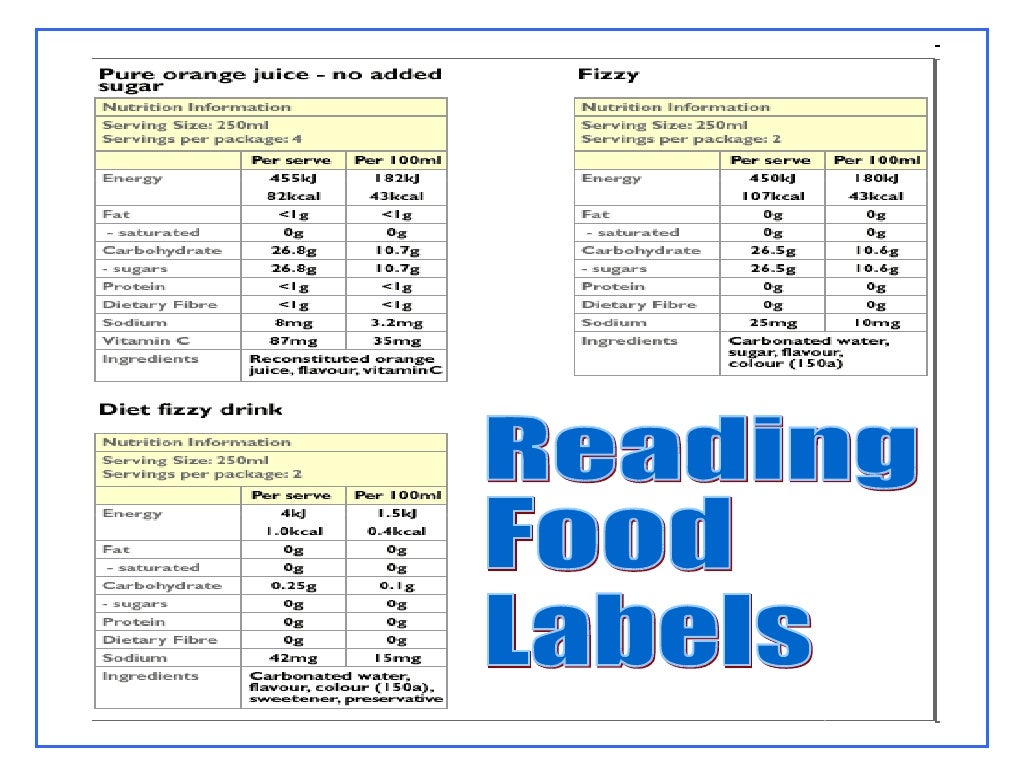

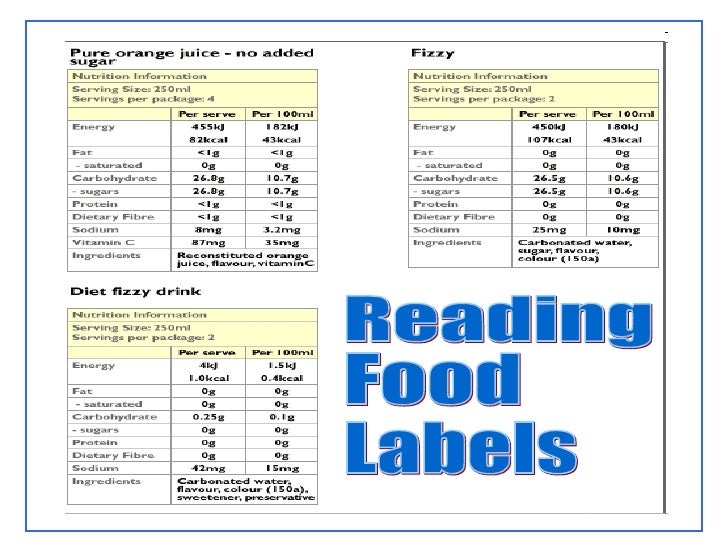



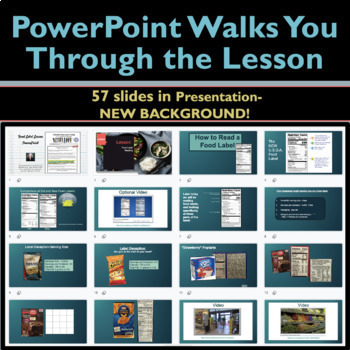


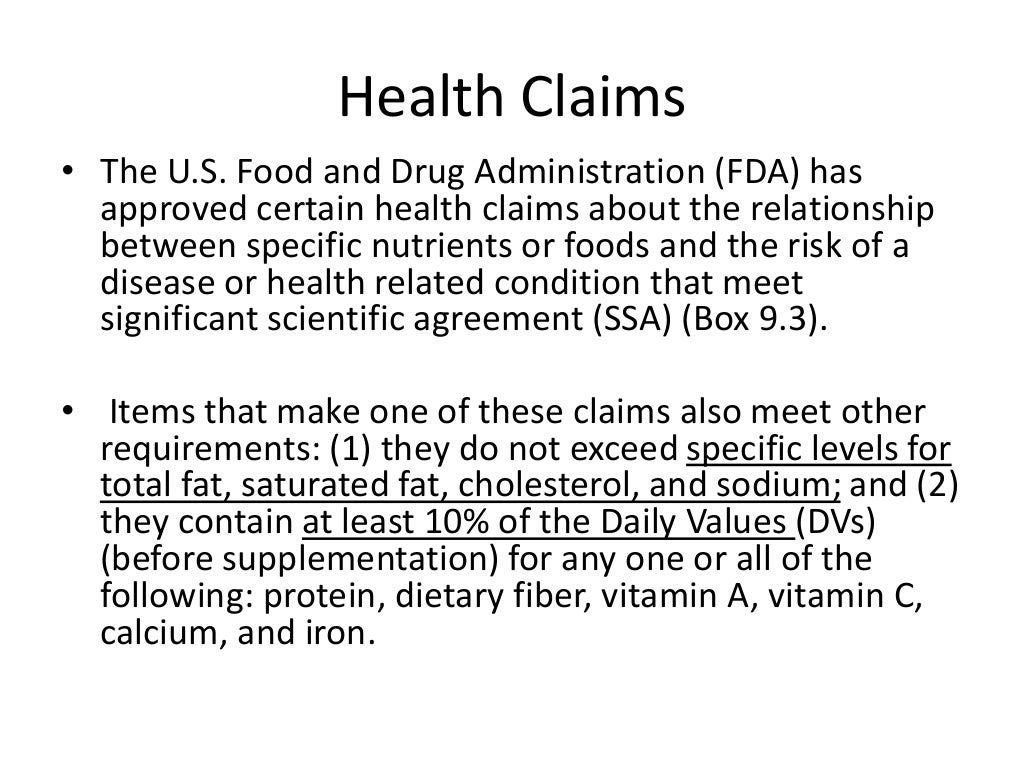
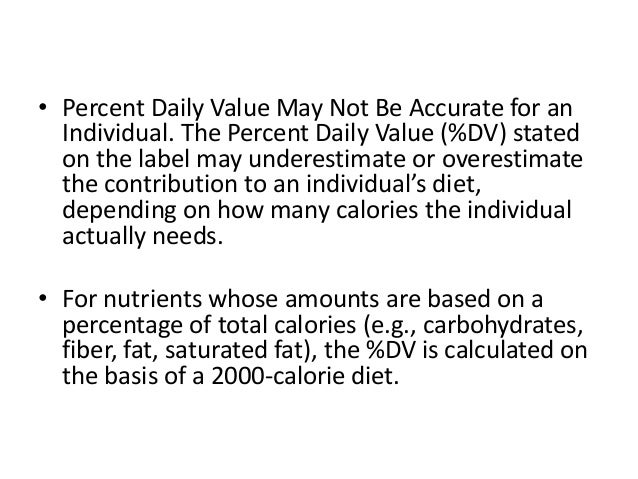

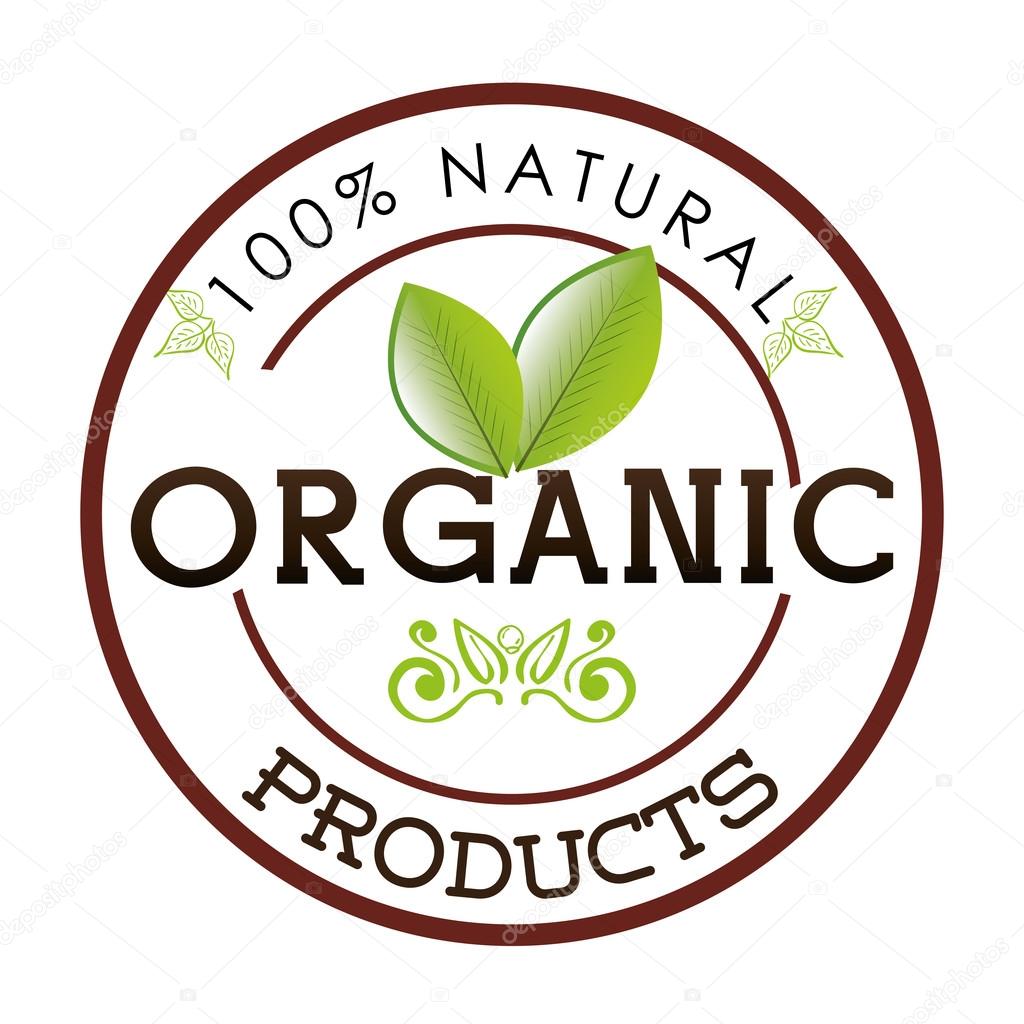
Post a Comment for "41 reading and interpreting food labels"